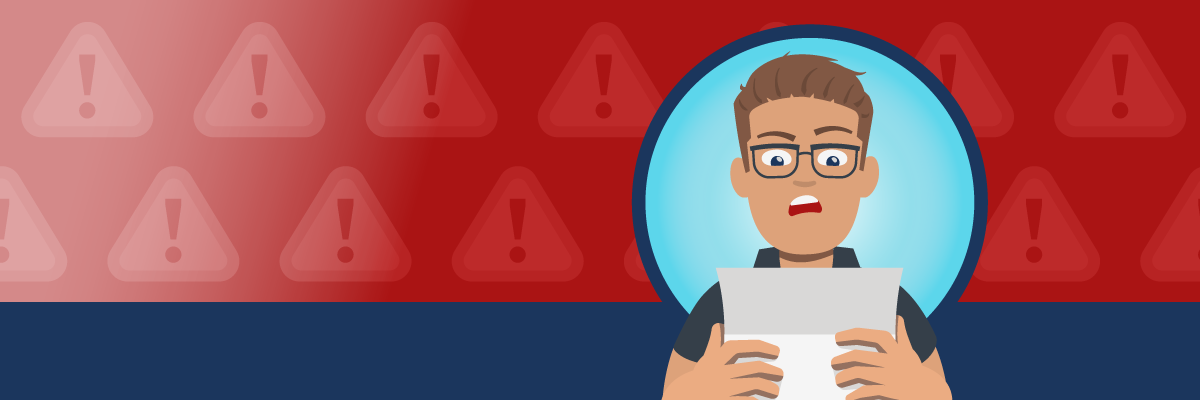
How Do Recent Loan Servicing Errors Impact You
Posted: 07/22/2024
Updated: 07/29/2024
When the payment pause ended, millions of borrowers got an unwelcome surprise. They were the victims of servicing errors resulting in missing, late, or inaccurate bills. Many were reported as delinquent on their loans. To make matters worse, seeking help from their loan servicers or Federal Student Aid (FSA) meant enduring extremely long hold times.
The underlying cause of the problems were the sheer number of borrowers who entered the system at once. Over 30 million began repayment in October. The federal student loan system was designed to support about 325,000 new payees per month. Given the disparity between need and capacity, mistakes were inevitable.
The U.S. Department of Education (ED) has reacted quickly. They’ve taken steps to protect borrowers from any financial damage caused by the servicing errors and are directing loan servicers to correct their mistakes.
This article details what errors were made, what ED did to address the problem, and what steps you can take if you suspect your student loan bill is wrong.
Missing and Late Billing Statements
Borrowers were promised a billing statement at least 21 days before their first payment was due. About 2.5 million either received them late or not at all. As a result, many missed their October payment and were reported as being delinquent on their loans.
Inaccurate Monthly Payments
A much smaller number of borrowers had the wrong monthly payment amount. In each case, loan servicers had used inaccurate data to calculate borrower’s bills.
Most of the borrowers affected by these errors fall into one of three groups:
- Borrowers who switched from REPAYE to SAVE – Within the last few months, millions of borrowers were automatically transferred from the old REPAYE Plan to the new SAVE Plan. That required their monthly payments to be recalculated. In many cases, servicers used old or inaccurate income data resulting in inflated monthly payments.
- Borrowers on an Income Driven Repayment (IDR) plan – The “federal poverty guideline” is an official figure that changes from year to year and is used to calculate payments for IDR plans. At least 280,000 borrowers were sent a higher payment after their servicer used the guideline from 2022 instead of 2023.
- Borrowers applying for defense to repayment – Borrowers who had pending borrower defense to repayment discharge applications were moved from forbearance to active repayment status and sent a monthly bill.
Additionally, some individuals received inaccurate payment amounts because their servicer used the wrong repayment plan or length of repayment when calculating the figure.
ED Takes Action
ED has enacted several decisive measures to protect borrowers. Loan servicers must notify any borrower hurt by the errors and place them in a retroactive administrative forbearance. This shields them from any negative impact the errors may have on their student loan accounts.
Servicers also must:
- Offer to refund any recent payments made by affected borrowers.
- Pay any non-sufficient fund (NSF) fees caused by automatic withdrawals.
- Reprocess IDR applications for affected borrowers using the correct family size, household income and spousal loan information contained in the file and send these borrowers new IDR disclosures with the revised monthly payment amount.
In addition to rectifying harm caused by the errors, ED has penalized one of the loan servicers for its failure to notify 2.5 million borrowers of their upcoming payments.
How to Get Help
If you’re among the borrowers affected by the servicing errors described in this article, your loan servicer should have contacted you by now. If you suspect there’s a problem with your student loan account, or want to guard against future errors, take the following steps:
- Check your messages – Search your email and text history for notifications from the FSA and your loan servicer. Be sure to check your spam folder. If you aren’t signed up for informational emails from FSA, follow these steps.
- Get access to your loan data – Sign up for accounts on StudentAid.gov and your loan servicer’s website. This will allow you to view the most recent loan data. Your loan servicer likely has the most up-to-date information.
- Check your contact info – Once you gain access to your FSA and loan servicer accounts, review your contact information. It may be out of date if you moved during the payment pause.
- Review your repayment details – Check your StudentAid.gov and loan servicer accounts to ensure your total amount owed, repayment plan and monthly payment amount are all correct.
- Check on your repayment history – Have you been flagged as delinquent on any payments since the pause ended?
If you spot any problems with your student loan account (your payment is wrong, you’ve been flagged as delinquent, etc.) try the following:
- Contact your loan servicer and try to resolve the issue with them. Read these tips from the FSA before you call. Be prepared for long hold times as all servicers are struggling to keep up with the demand for help.
- If your servicer fails to solve the problem, or you disagree with their resolution, you can file a complaint with the FSA Ombudsman Group.
- If you have more questions or need help resolving an issue, you can also contact a Borrower Advocate at Student Connections.